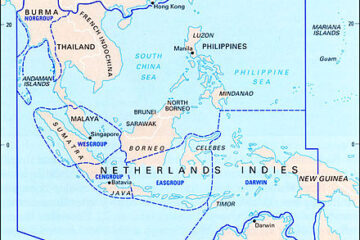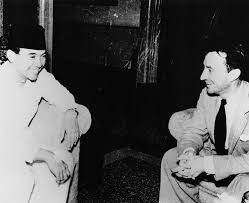Proportional Representation – Party List
The Westminster legacy: Single Member Districts.
What that means currently: In many seats the Member does NOT represent the majority – and the minority is often NOT represented by the Opposite party either. It is also incorrect to claim that a local MP represents all voters in an electoral district while the adversity of the major parties is on display daily! Overall, the SMD system inherently results essentially in a two-party adversarial system. Minor parties and Independents usually won’t be elected. Independents mostly emerge by breaking away from a major party – only AFTER they have gained recognition as an effective politician. Even the Greens, receiving between 9% and 14%, only have one MP in the federal Parliament. How fair is that? Clearly, the desire for the representation of diversity has grown steadily. Since the 1990s the number of seats decided by preferences has increased markedly. Thirty-one in 1983, sixty-three in 1993, eighty-seven in 2001, in 2016 an astonishing 102 out of 150 seats. In 2019 only 18 seats out of 151 seats were declared on first preferences! A report on first preference percentages tells a similar story: Coalition 41.44%, ALP 33.34%, Greens 10.40%. Neither major party has an overall mandate.
A major political culture change is needed: stimulating cooperation instead of combat.
The principal alternative to the Single-Member-District electoral system is Proportional Representation – Party List, used in 89 countries. It is based on multi-member districts. This is a proven, tested system. It is quite unlike the Hare-Clark PR system used in Tasmania, the Senate, ACT and four State Legislative Councils. That system (Hare) was first used in the UK in the mid-19th century, prior to the development of mass parties, and later adapted by Clark for Tasmania (1907). Although also based on multi-member districts it is suitable only for small legislatures where voters know the candidates reasonably well. It is hardly used elsewhere, unlike the Party List systems which are widely used and are suitable for modern large societies. Most Australians do not know this system well, but it is the answer to governance system change in Australia which is long overdue. With the exception of the MMP system (a variant of Party List, used in NZ and Germany) VOTERS HAVE ONE VOTE ONLY. There will be more parties participating as they will have a proportional (fair) chance to be elected. A minimum entry threshold of 3% to 5% usually applies – thus avoiding that too many small parties are registering. Parties that qualify will gain seats on the basis how many times they achieve the quota, that basically is the total number of votes divided by the number of seats, calculated mostly by the d’Hondt method. There are no boundary hassles and no pork-barrelling. Replacement of an MP who leaves Parliament is simply done by appointing the one on the list who just missed out at the previous election. This is a far more democratic system than SMD. It would replace the current toxic, adversarial culture with MAJORITY government instead of government by the dominant faction of one major party! The Senate PR system (Hare-Clark) has undoubtedly resulted in greater diversity of representation but, regrettably, its preferential requirements have made it possible for candidates of minor parties to be elected on the basis on very small primary votes. This is simply not possible with the Party List systems – a very important difference of course! The growing desire for more diverse representation in Australia has been demonstrated as a very large number of new parties have registered in recent years (around 55). However, their chance of gaining a seat is Parliament is demonstrably very small, unfairly so. The introduction of a Party List system would be welcomed by many. The ALP should organise a major Inquiry to consider the introduction of new electoral system in Australia. There can be little doubt that this would be widely welcomed given the disenchantment with the two-party system.
Some people argue that the introduction of PR – Party list, to replace SMD, could be regarded as unconstitutional and/or would require a Referendum to effect such a change. That is highly unlikely. However, a Government may decide to introduce it after a positive Referendum as happened in New Zealand in 1992; this is NOT a requirement. The drafters of the 1901 Constitution were content for the Parliament to make most of the decisions as to how it should be elected. In most clauses where the electoral system is mentioned the Constitution states that the Parliament is to legislate to organise elections. This can be seen in the sections regarding the Senate, 7, 9, 10, 13 and 15 (amended in 1977 following abuse of “Conventions” about replacing retiring Senators). And for the House of Reps 24, 25, 26,27,29, 30, 31, 33 and 34. It is frequently stated there “until the Parliament decides otherwise”. Remember also that political parties were not mentioned at all in the 1901 Constitution.
Interestingly, it was the ALP that introduced Proportional Representation in 1948 for the Senate, used in the 1949 election (Hare-Clark). And it was the ALP that introduced an amended format in 1984: “above the line” and “under the line” preferencing. In both cases there was no Referendum and no High Court case mounted against it. The ALP, in the Electoral Reform section of its Constitution, urges fairness in representation. Is it fair for the Greens to have just one MP in the lower house on a vote percentage of 10.4%?
If the ALP were to adopt PR – Party List the Greens would gain several MPs and the ALP might lose some. BUT jointly as a Coalition Government, possibly including some other minor party representatives and Independents, they could well end up with a substantial majority. The example of New Zealand’s Labour ‘s Coalition victory surely serves as an excellent model. A new electoral system policy for the ALP and explained properly by the leadership would not only assist in securing victory in the next federal election but provide the major culture change required to rebuild trust in the political system.
Klaas Woldring, Ph. D., A/Prof SCU (ret). klaas.woldring@bigpond.com –
Ph 0407834518 or 02 4341 5170
Professor Klaas Woldring has launched a Facebook page on this topic: https://www.facebook.com/Improving-Parliamentary-Representation-in-Australia-105761175281121
____________________________________________________________________________________________
Recent books by Klaas Woldring
How to improve Australia’s Democracy, BookPod/Amazon, 2020
YES, we can …….rewrite the Australian Constitution, BookPod/Amazon, 2018
Beyond Federation – Options to renew Australia’s 1901 Constitution, BookPod/Amazon, 2015 (with eight others)
Australia Reconstructed, eBookPod/Amazon, 2013
How about OUR Republic? BookPod/Amazon, 2006
Australia – Republic or US Colony? Lulu, 2005
URLs referring to Party List systems in the world:
http://www.europarl.europa.eu/workingpapers/femm/w10/2_en.htm
www.proportional-representation.org


